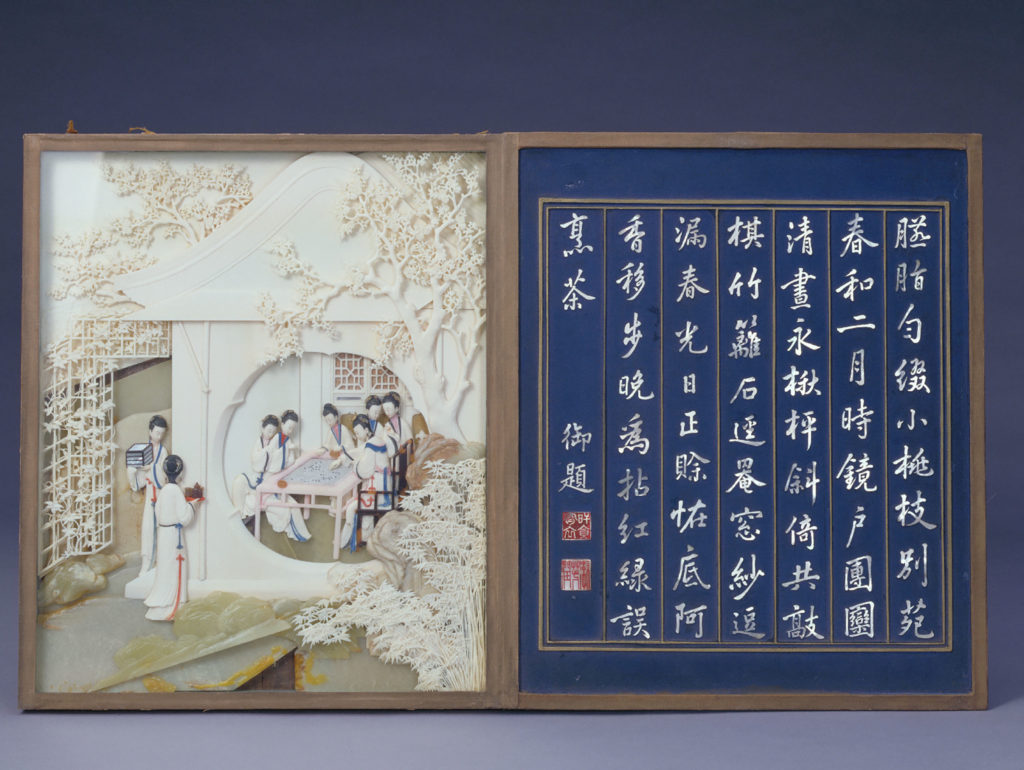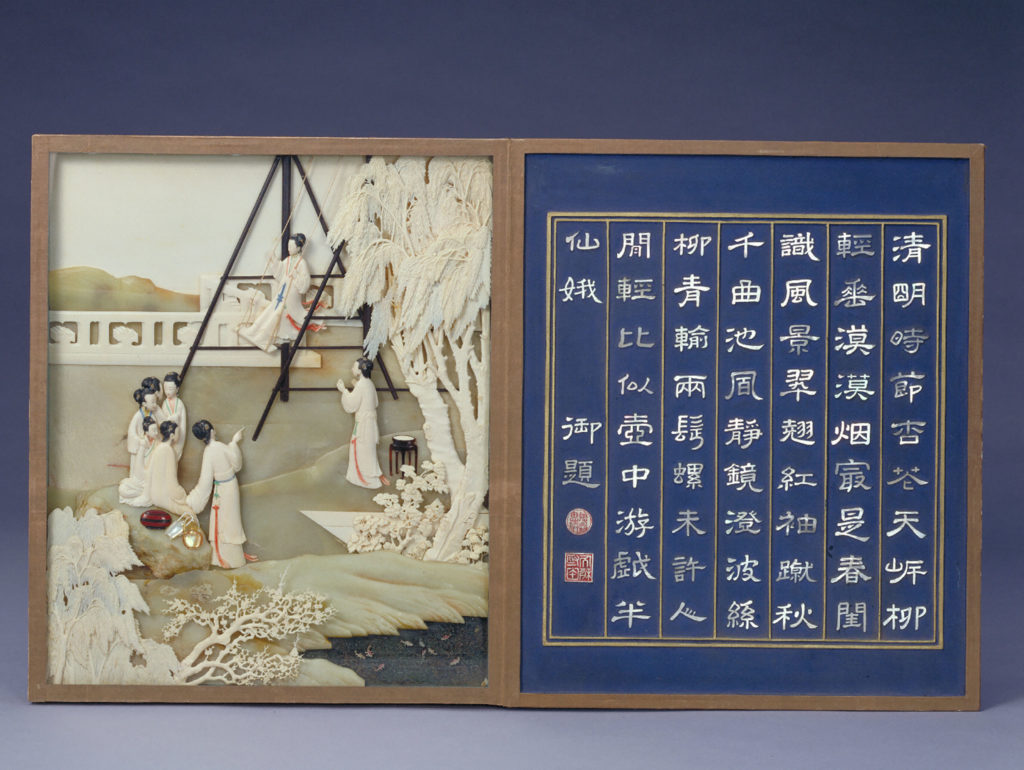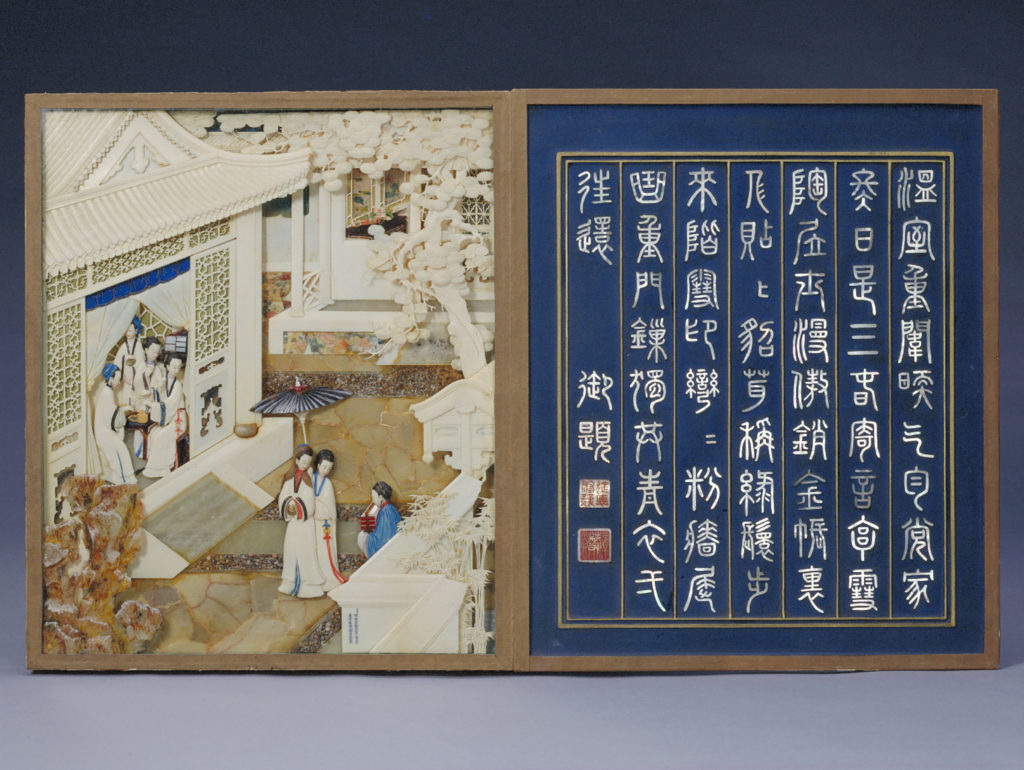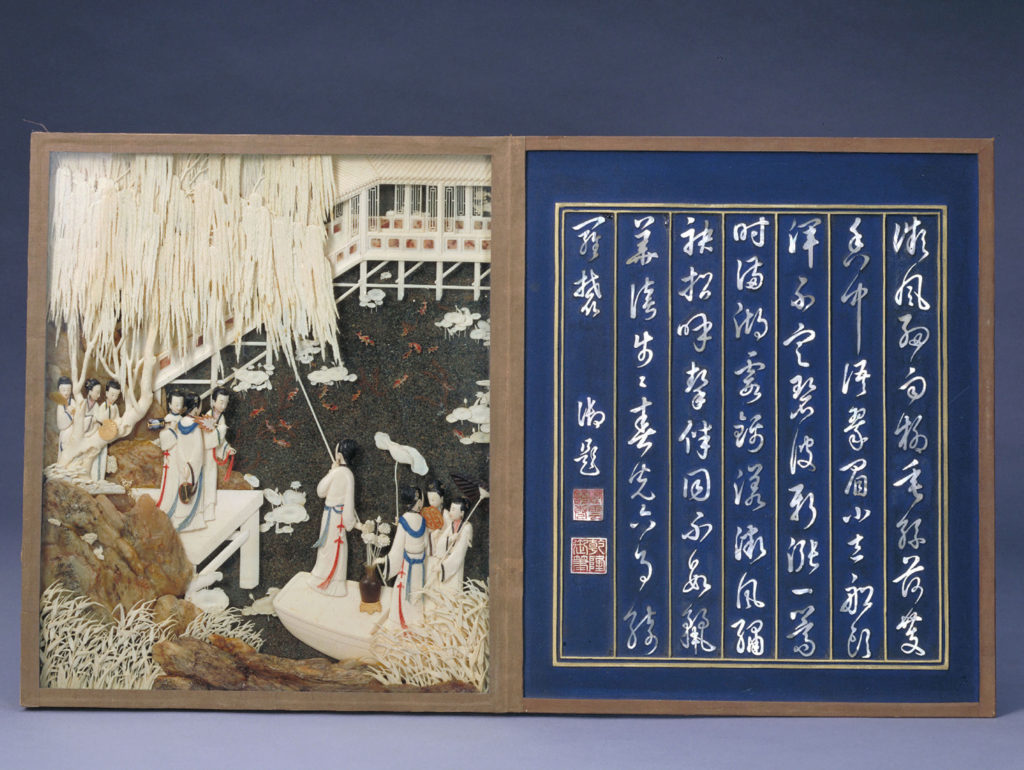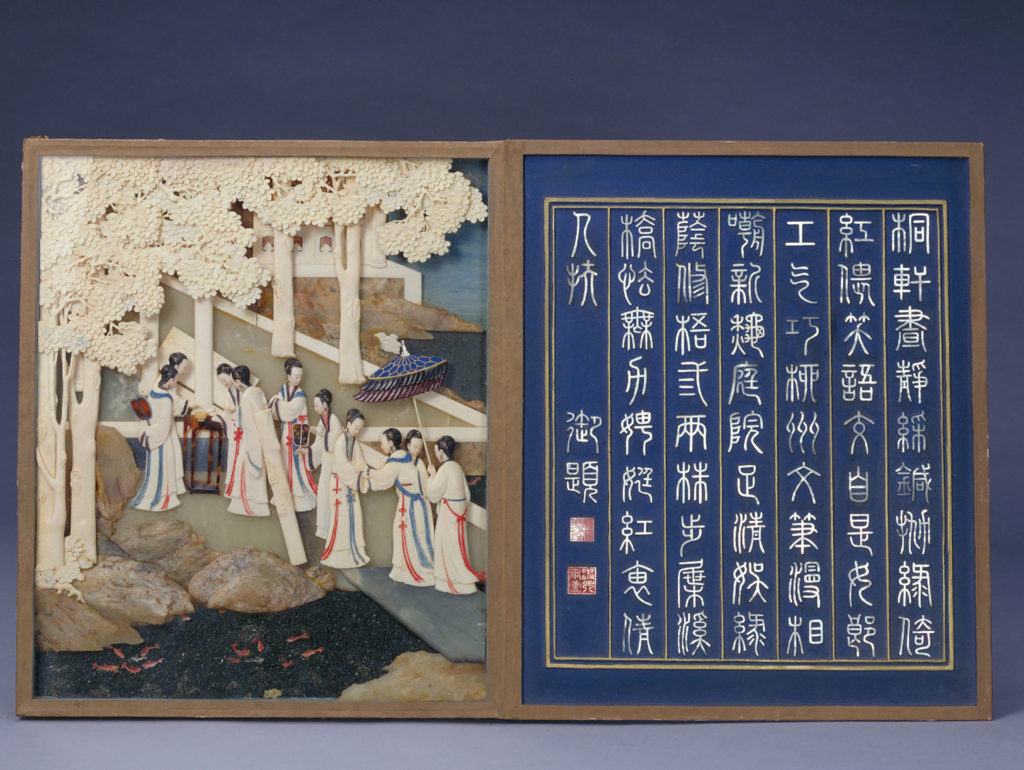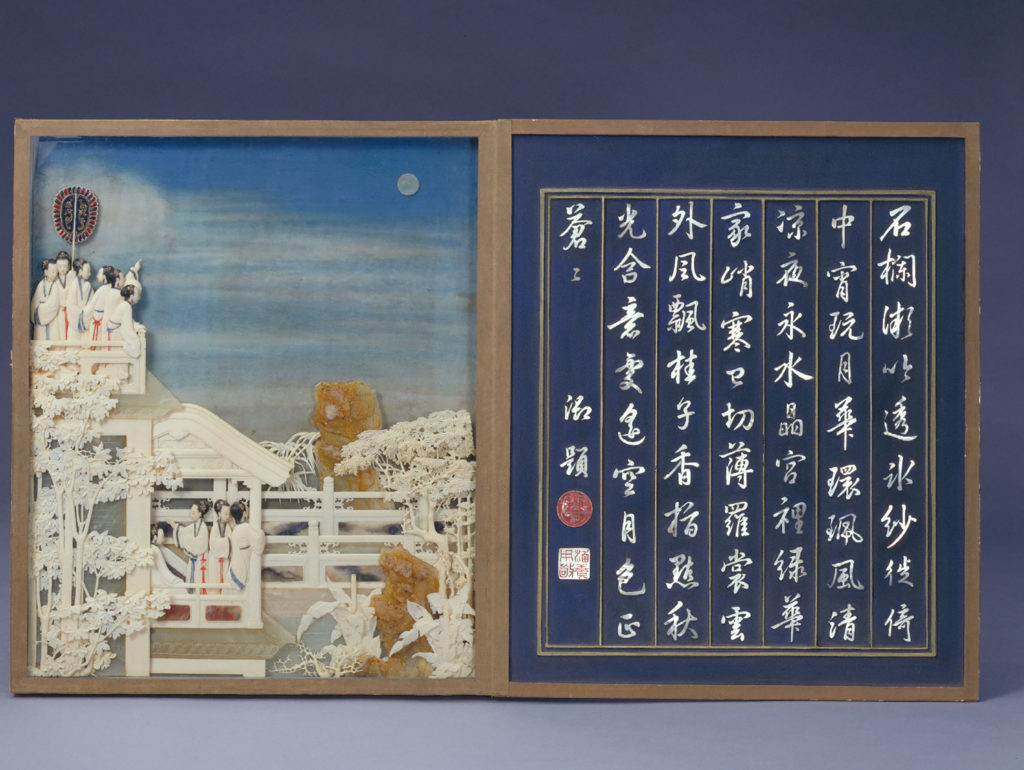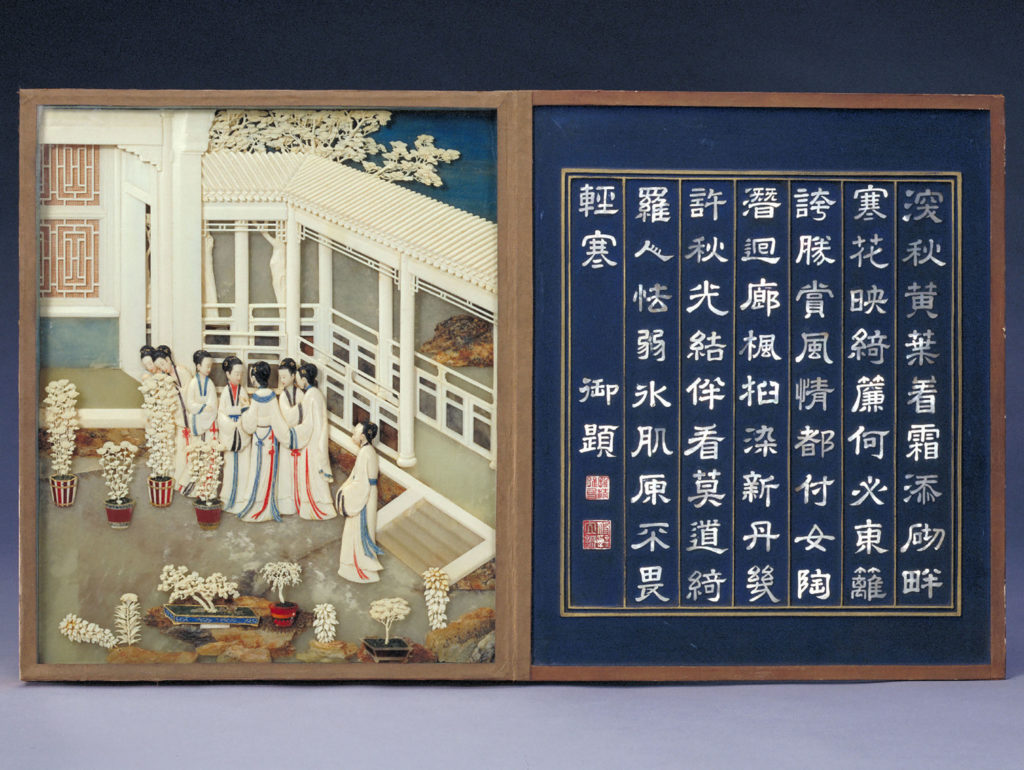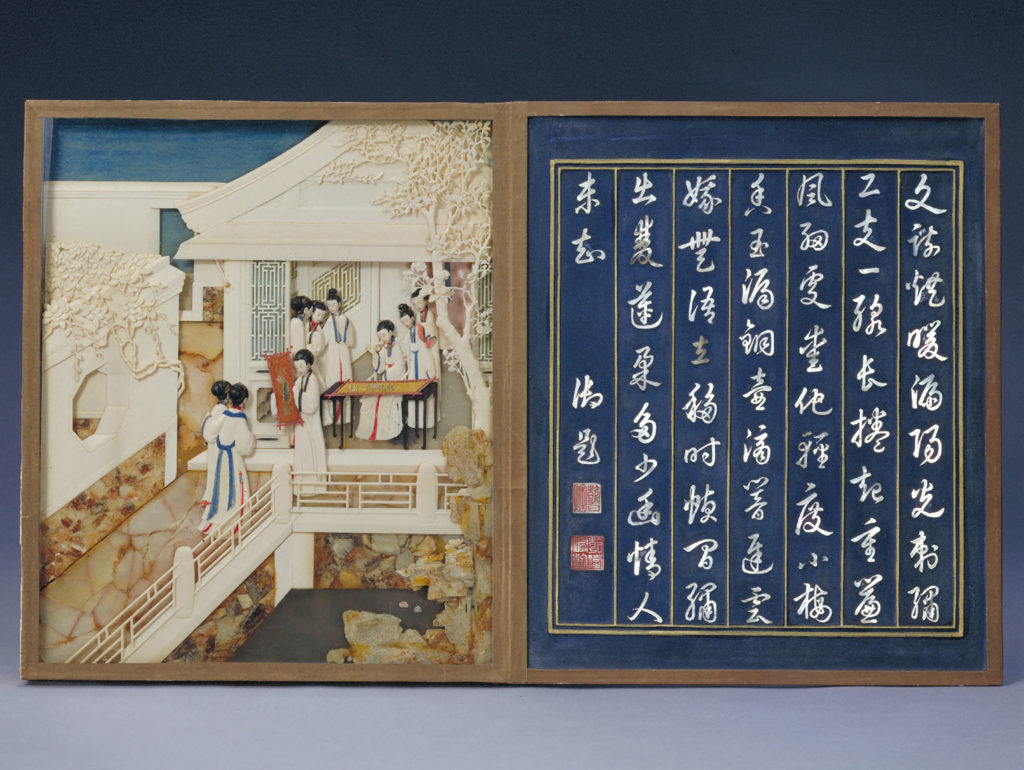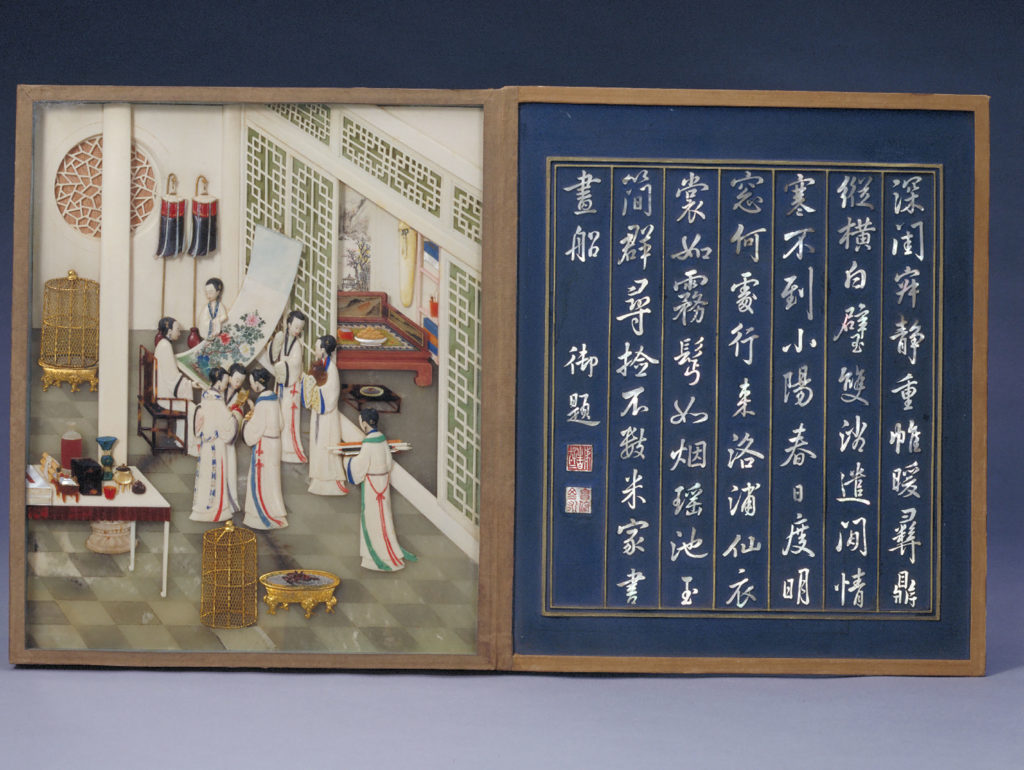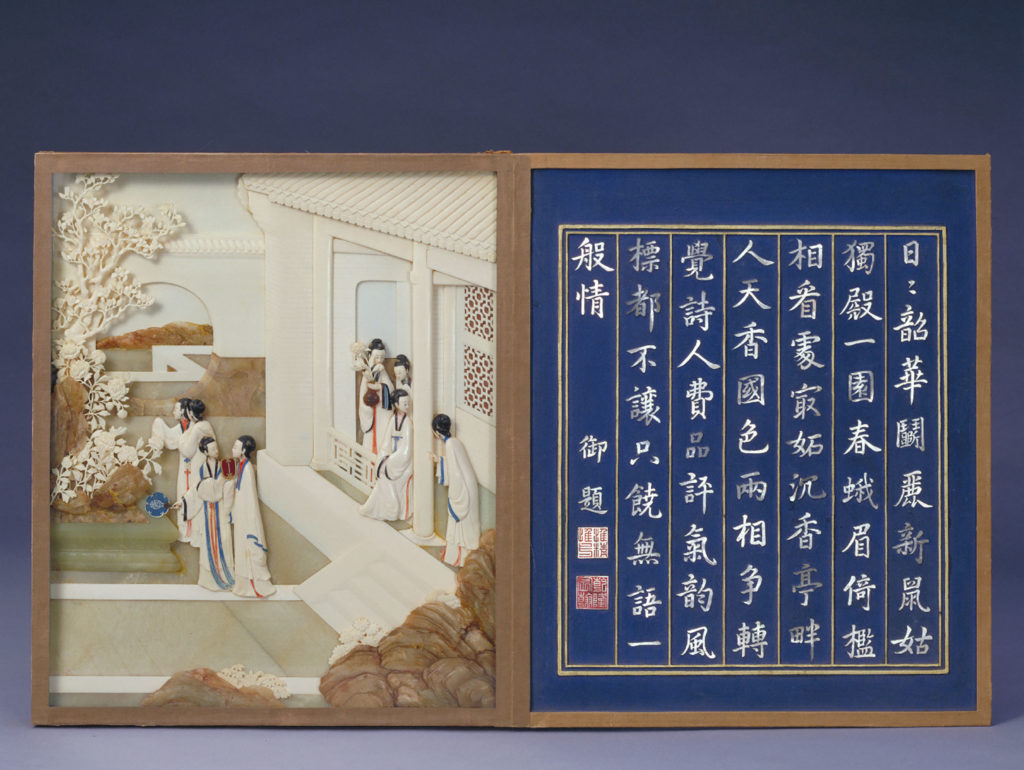Based on an album of paintings by the court painter Chen Mei, the album of ivory carvings titled Pleasures of the Months for Court Ladies is the result of an elaborate collaboration between Chen Zuzhang, his son Chen Guanquan, and other ivory carvers of the Imperial Workshop. The work is mostly carved from ivory and inlaid with ruby, sapphire, agate, and tortoiseshell. This album, with a total of twelve leaves, depicts the life of court ladies in each lunar month of the year and is recognised as the finest ivory masterpiece of the Qing dynasty.
Chen Zuzhang was sent to serve at the court in Beijing by the Governor of Guangdong in 1729. He was the earliest-known ivory carver and the only one from Guangdong to work at the Imperial Workshop during the reign of the Yongzheng Emperor. In 1740, Chen’s son, Chen Guanquan, was summoned to the capital. In 1742, Chen asked to return to Guangdong. The Qianlong Emperor granted his request and bestowed upon him 30 taels of silver.
Chen and his son were from Guangdong. How did they end up working thousands of miles away in the Forbidden City? As it turns out, the Imperial Workshop would report to the emperor and request hiring additional personnel when it was short-staffed. At the emperor’s approval, local officials would pick out skilled crafters, and the local government would pay for their transport to the capital. Upon arrival in Beijing, they would have to take an entrance examination, in which they would usually be required to produce a work of art. If they passed, they would be able to work at the Imperial Workshop. Artisans could also recommend candidates when vacancies were available, so many fathers and sons, brothers, and masters and apprentices worked together as colleagues at the Imperial Workshop. That was the case with Chen and his son.


